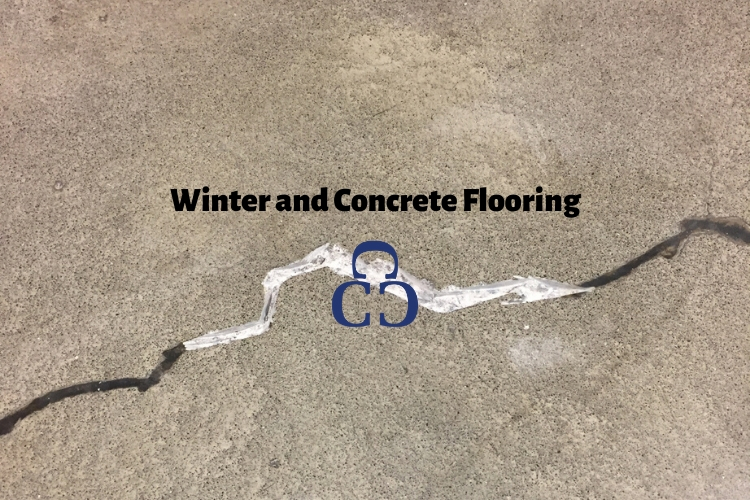
Polished concrete floors are becoming increasingly popular in commercial locations. There are many pros to this flooring, along with a few cons, but with the cold and snowy months upon us slush, mud, water and salt is tracked into every building and business. If you are someone with the pleasure of having polished concrete floors, you may be wondering what precautions to take or how to maintain polished concrete this time of year.
The biggest risk factors to your polished concrete floors are the salt and the moisture. Concrete is porous, so salt and moisture can easily sink down into it and potentially compromise the floor. Not only will this cause it to break down over time and require repairs much sooner, but the mildly acidic salt can break down the bonds of concrete surfaces and cause unsightly staining on your beautiful floors.
In addition to the de-slicking salt breaking down the bonds of the concrete, continuous moisture seeping into the slab can cause salt within the concrete to rise to the surface of the slab leaving a white residue called “efflorescence.” Not only is this not the desired look of polished concrete, but it requires time and money spent cleaning, preventing and repairing.
So, you may be wondering how to maintain polished concrete in your business or how to prevent these issues before they occur. One thing that puts you at risk to develop salt damage or efflorescence in your polished concrete is the presence of cracks, gaps or broken sealant. All of these things allow for salt and moisture to sink into the concrete costing you money. Filling and resealing these cracks and gaps are a great place to start when preventing damage to your concrete floors.
For the most protection against the elements this winter, there are a few additional steps that you can take to ensure that your polished concrete makes it through the season.
Densifiers & Hardeners
Concrete is known to be hard and durable, but taking this extra precaution can take it to the next level. A hardener added to your concrete floor will create a chemical reaction, which offers abrasion resistance, higher strength, reduced dusting and most importantly - increased water resistance. This is a great idea if you want to prevent moisture absorption in your concrete.
Everyday Maintenance
When thinking about how to maintain polished concrete, you should already have a daily maintenance schedule for cleaning your floors, but the winter months may require a bit more effort to fully prevent damage to your concrete. It is important to remember to use products that are gentle and will not cause harm or abrasions to your polished concrete. Cleaning up dust and other debris with a microfiber pad is a great way to keep your floors free from loose dirt and salt a couple times throughout the day without scratching the polish.
When removing the tougher stuff, like dried mud and stuck-on salt, it is recommended to use plain, clean water. This will prevent any slightly acidic cleaners from harming your polished concrete. If something stronger is needed, a cleaner with a neutral-ph is recommended to remove the tougher particles.
As the temperature drops and the mess increases on your floors, take precautions to ensure that your polished concrete makes it through the winter season stress free and easy.
